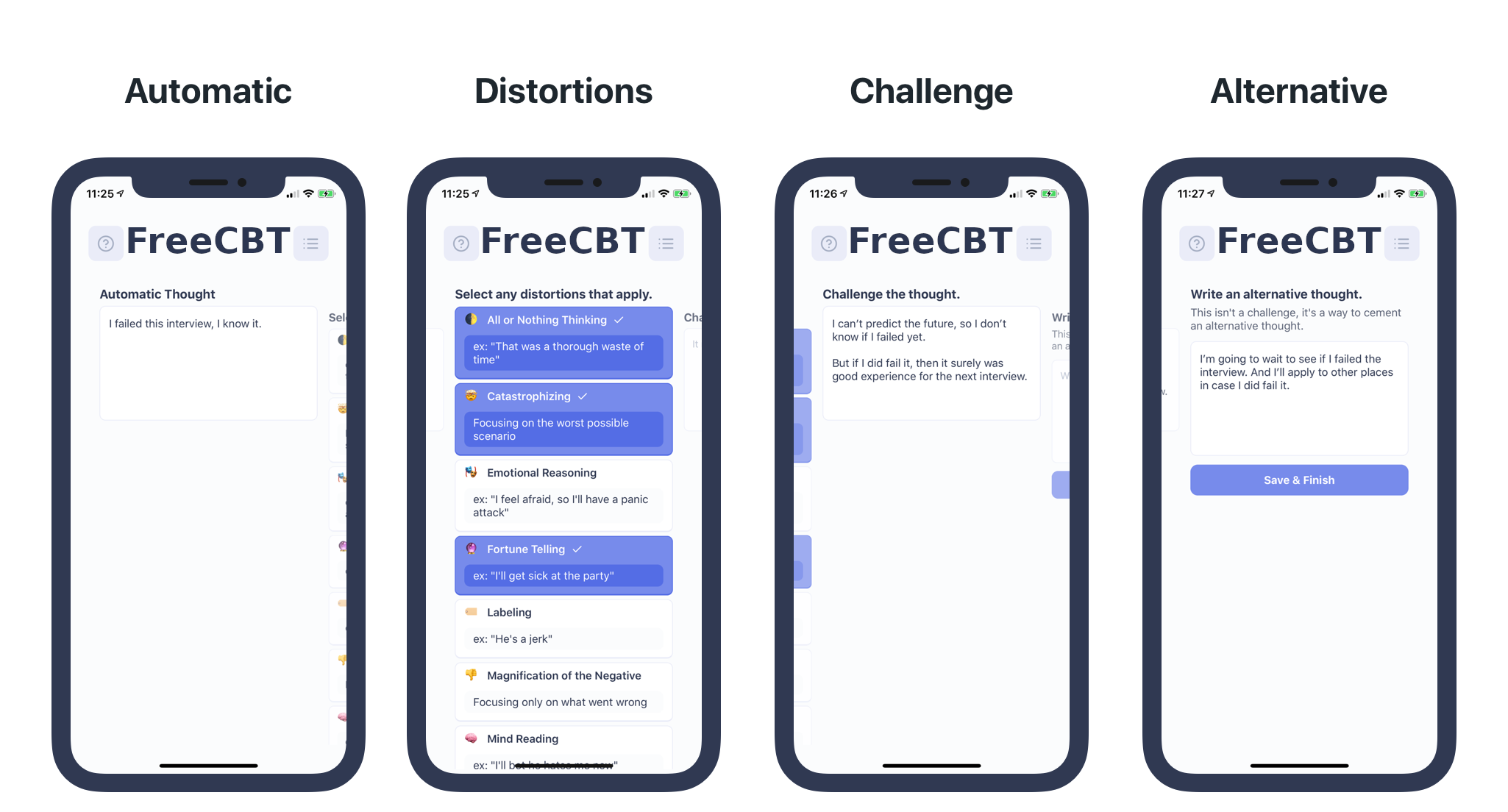So you just downloaded FreeCBT
FreeCBT can help you feel a lot better if you let it. But it's something you have to learn about and it's something you have to practice.
We recommended you read this entirely; the investment is worth it.
How to use FreeCBT
FreeCBT's exercise is simple, yet quite effective. When you're feeling depressed, anxious, or otherwise not-great, pull out FreeCBT.
It looks like this:
- Record your automatic thought
- Select any distortions
- Record a challenge to your thought
- Record an alternative thought

1. Record your automatic thought
Almost every time when you're feeling bad, it's caused by or being made worse by "automatic" negative thoughts.
This could be small, like "I'm having a crappy day" or big like "I'm worthless." These thoughts are normal but not necessarily trustworthy.
By writing down your thought, you're separating it from yourself and giving yourself the ability to examine it skeptically.
2. Notice any distortions
Mental health professionals have classified a number of ways our thoughts can be distorted. They call these "Cognitive Distortions" and there's a list of them here.
If you're feeling not-great, it's very likely your thoughts are distorted.
Look back at the times you've been anxious, angry, depressed or afraid before. How often were your thoughts true in the moment? Did the thing you worried about come true? If it did, was it as bad as you thought?
So often, the fact that we're physically feeling the sensations of anger, depression, anxiety or fear is good evidence that our thoughts are distorted.
3. Record a challenge to your thought
With the distortions you've noted, write down what seems inaccurate about your thought. If someone else had approached you with this thought, what would you tell them?
Only write down what you actually believe. If your thought was "I'm going to fail this interview," your challenge should not be "I'm not going to fail this interview."
Instead, your challenge should be "I don't know that I will fail this interview, but even if I do, it will be fine since I've gained experience for the next interview."
Your distorted thoughts are by definition not 100% true; you can't challenge them by lying to yourself in the opposite direction.
4. Record an alternative thought
Finally, you'll record an alternative thought. Given this situation again, what could you think?
If your automatic thought was "I'll bet I'll fail this interview" your alternative thought might be "I'll wait to be concerned until I know if I failed. In the meantime, I'll apply to more jobs."
An alternative thought is a chance to give a new reaction to the situation.
Okay, now what?
It's time to really start noticing how you're feeling. If you're not doing well, remember, you have FreeCBT now.
It's often very hard to remember to do some silly exercise when you're wrapped up in the moment. This will take practice.
Will I feel better right away?
Sometimes, but not always.
But if your thought has been looming around for awhile, you'll probably still feel upset. That's fine and that's normal.
You just give your body some time to recover. A good strategy is to do the exercise, then set a timer for 20 minutes.
As you use FreeCBT more, you'll notice you have less of these negative thoughts. When you do have them, they won't "spiral down" like they used to.
This is something you have to practice and it will take time.